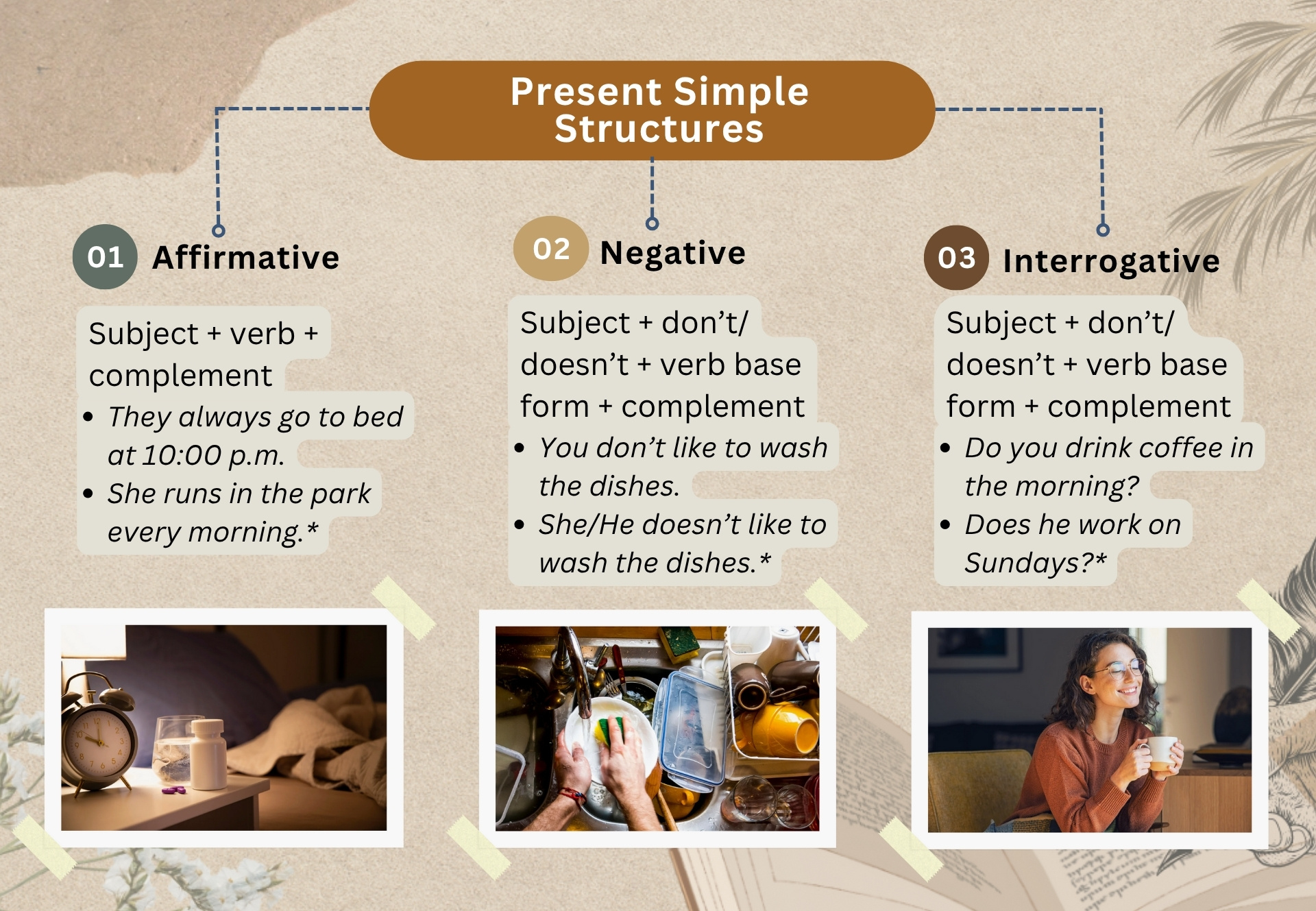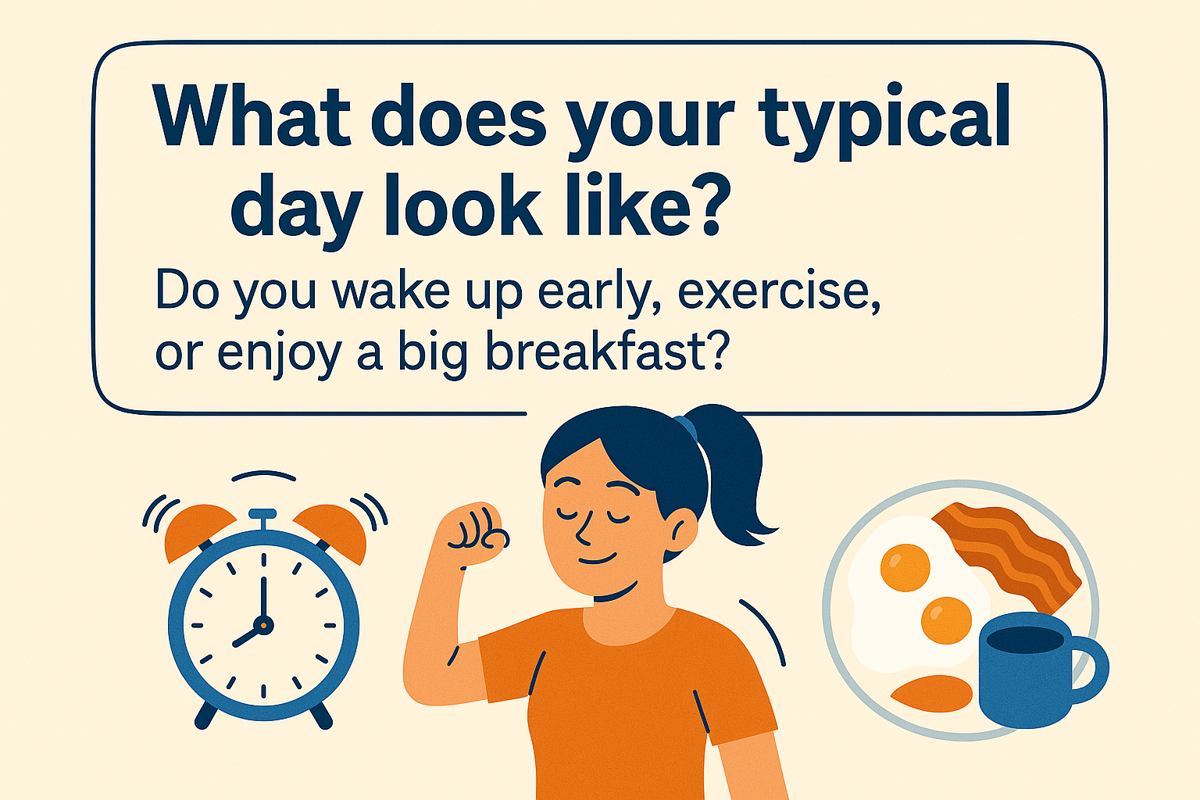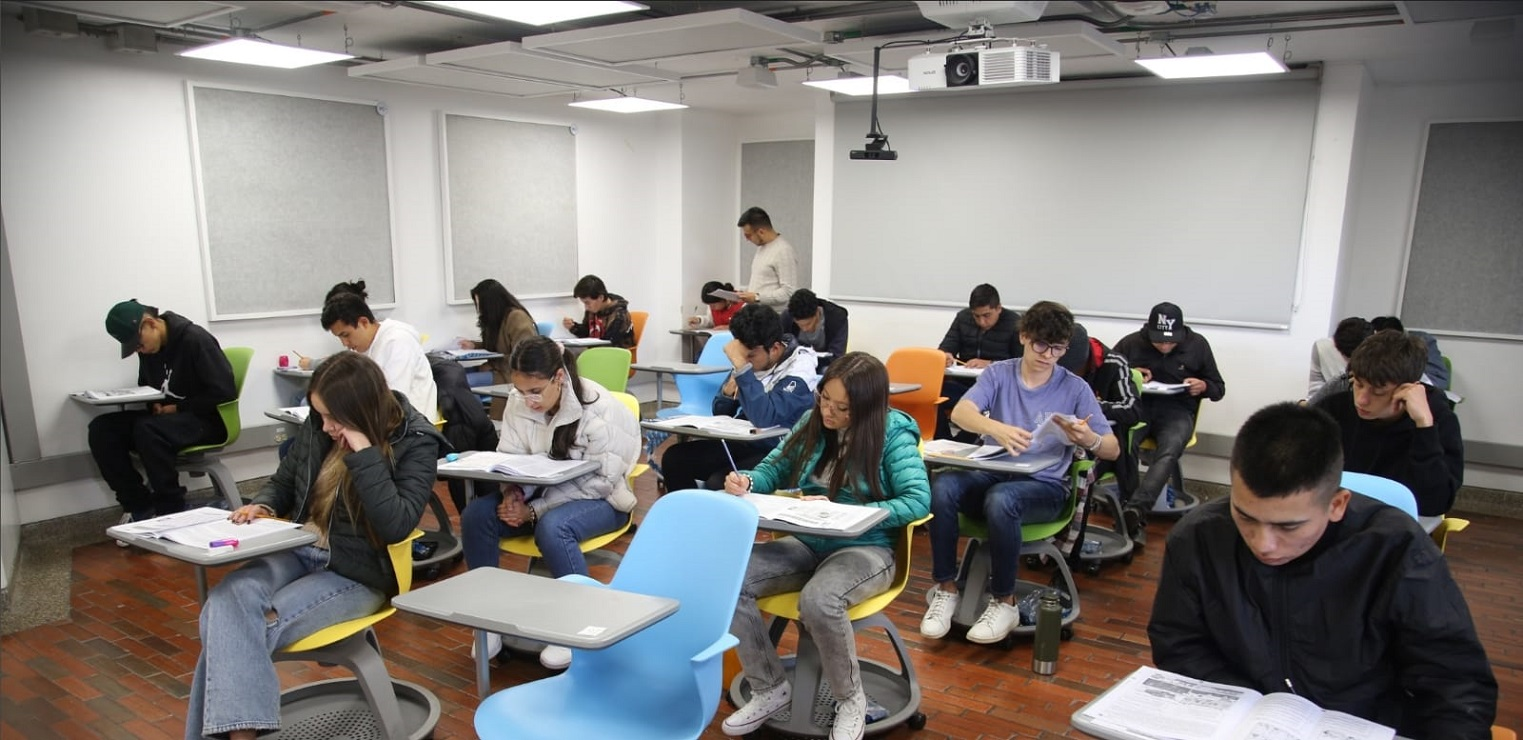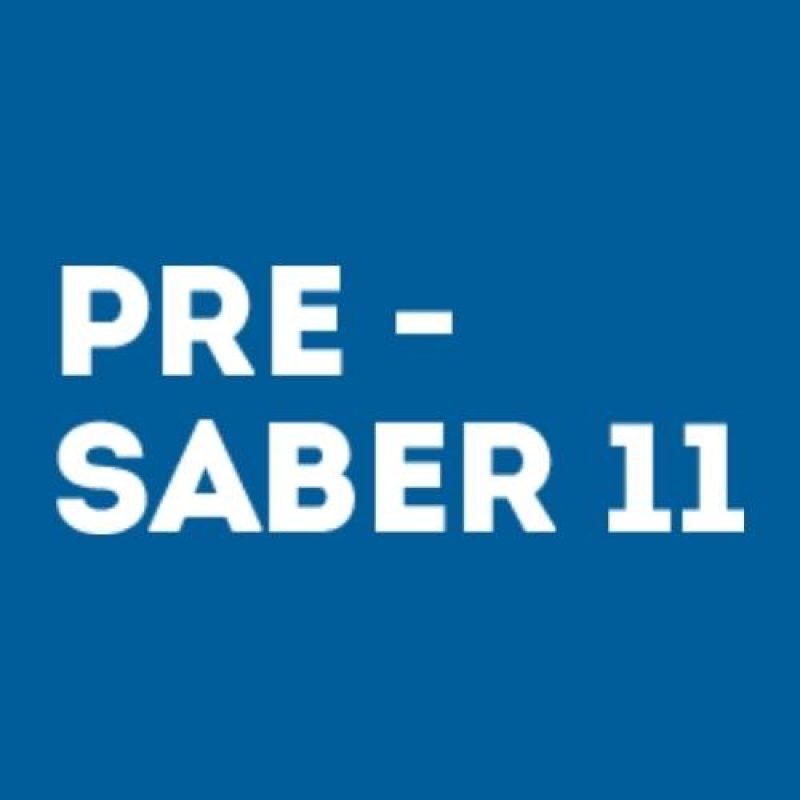What does your typical day look like? Do you wake up early, exercise, or enjoy a big breakfast?
Get ready to dive into the world of daily routines through this post, some interactive visuals, and fun games!
Let’s start by exploring how to talk about our daily lives, habits, and physical activities using an important grammar tool: the Present Simple!
In English we use the Present Simple tense to talk about things or actions that happen regularly, facts, and routines.
Examples:
- I wake up every day at 6:30 a.m. (Routine)
- She plays tennis on weekends. (Routine)
- The Earth revolves around the Sun. (Facts/General truths)
- Water boils at 100 degrees Celsius. (Facts/General truths)

Another important part of the Present Simple is using adverbs of frequency and time expressions to show how often something happens or when it happens.
- Adverbs of Frequency: always, usually, often, sometimes, rarely, never,
- Time Expressions: every day, in the morning/afternoon/evening, at night/midnight, on Mondays, at the weekend.
Examples:
- He always drinks coffee in the morning.
- She goes to the gym three times a week.
- They rarely eat fish for breakfast.

Created with Canva AI
How Do We Form the Present Simple?
Here are the Rules!

*To keep in mind: Third person singular verbs need the final s/es in affirmative sentences. And verbs lose the s/es in negative and interrogative sentences.
Present Simple in Context
So far everything has been about theories and explanations. Let’s move forward and see it in context. Meet Juan and Ariana! Read the following information about their daily activities and try to identify all the elements we have explained so far.

Ariana wakes up at 6:30 a.m. every weekday. First, she makes her bed and takes a shower. Then, she eats breakfast – usually toast and coffee. After breakfast, she brushes her teeth and gets dressed. She leaves her house at 7:45 a.m. and takes the bus to university. In the evening, she studies, cooks dinner, and watches her favorite show on Netflix. She goes to bed around 10:30 p.m.

Juan exercises four times a week. On Mondays and Wednesdays, he goes to the gym. He lifts weights and does cardio. On Fridays, he plays football with his friends in the park. He doesn’t like swimming, but he enjoys cycling on Saturdays. Juan always feels energized after his workouts.
Were you able to identify the verbs? Did you see the changes with the third person singular? And how about the use of adverbs of frequency to give us a wider context about their activities?
Let’s Practice!
This journey does not end here. Now is the time to apply these rules and theories. I encourage you to navigate other platforms and dive into the web while you learn. Follow the steps and remember that you can come back to this place as many times as you want and need:
1. Ready for a challenge? Practice with this quiz Click here
2. Deepen your knowledge and have some fun with this game Click here
3. Finally, if you want to go beyond answer these questions in the comments below:
- What time do you usually wake up?
- What sports do you play?



















Comentarios
What time do you usually wake up?
I usually wake up at 6:30 a.m. on weekdays because I have to go to work and university.
What sports do you play?
I play football with my friends on Fridays, and I sometimes go cycling on weekends.
I always wake up at 7:00 a. m.
I do box and I go to the gym all days
I usually wake up at 4 o´clock in the morning
I play basketball
I usually wake up around 7:00 a.m. I don’t really play any sports, but I often go running because I enjoy it.
1. I usually wake up at 7:00 a.m from Monday to Friday to go to classes or do unervisity work in the morning.
2. I lift weights at the gym on Mondays, Thursdays, Fridays, and Saturdays from 2:30 to 4:30 p.m. because I enjoy it and it helps me grow physically and emotionally.
What time do you usually wake up?
I usually wake up 8 AM
What sports do you play?
I play soccer practice 1 times on week